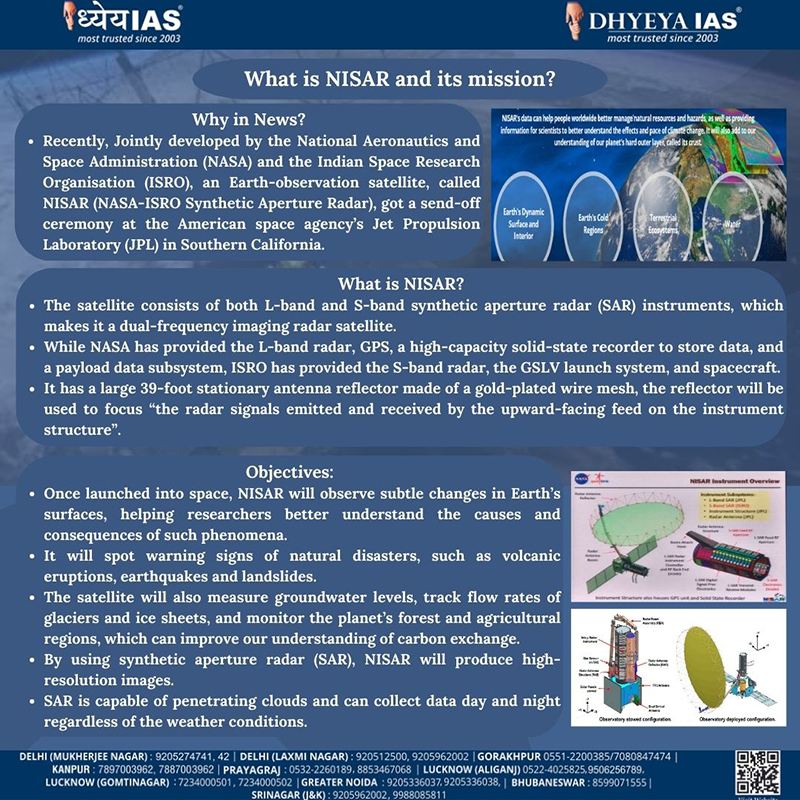
Why in News?
- Recently, Jointly developed by the National Aeronautics and Space Administration (NASA) and the Indian Space Research Organisation (ISRO), an Earth-observation satellite, called NISAR (NASA-ISRO Synthetic Aperture Radar), got a send-off ceremony at the American space agency’s Jet Propulsion Laboratory (JPL) in Southern California.
What is NISAR?
- The satellite consists of both L-band and S-band synthetic aperture radar (SAR) instruments, which makes it a dual-frequency imaging radar satellite.
- While NASA has provided the L-band radar, GPS, a high-capacity solid-state recorder to store data, and a payload data subsystem, ISRO has provided the S-band radar, the GSLV launch system, and spacecraft.
- It has a large 39-foot stationary antenna reflector made of a gold-plated wire mesh, the reflector will be used to focus “the radar signals emitted and received by the upward-facing feed on the instrument structure”.
Objectives:
- Once launched into space, NISAR will observe subtle changes in Earth’s surfaces, helping researchers better understand the causes and consequences of such phenomena.
- It will spot warning signs of natural disasters, such as volcanic eruptions, earthquakes and landslides.
- The satellite will also measure groundwater levels, track flow rates of glaciers and ice sheets, and monitor the planet’s forest and agricultural regions, which can improve our understanding of carbon exchange.
- By using synthetic aperture radar (SAR), NISAR will produce high-resolution images.
- SAR is capable of penetrating clouds and can collect data day and night regardless of the weather conditions.
